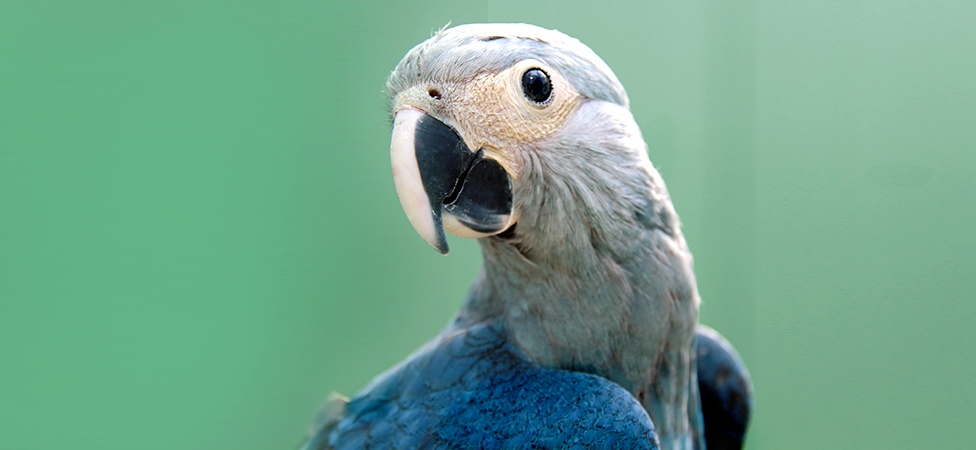On June 23, 2018, it was announced that about 50 Spix’s macaws, the extinct-in-the-wild blue parrot made famous in the animated movie Rio, will be reintroduced to their native habitat in Brazil from captivity in Germany.
A bit earlier, on June 8, 2018 (World Environment Day), Michel Temer, President of Brazil signed a decree that was crucial to restoring the Spix’s macaw to the wild (and important to other species that share its habitat). He signed off on a wildlife refuge and environmental protected area that spans 120,000 hectares in the municipalities of Curaçá in the state of Bahia.
This area is some of the historic range of the Spix’s macaw and will greatly improve the chances of protecting the habitat for the reintroduction of Spix’s macaws back into the wild.
The Caatinga is an arid (semi-desert) biome, extremely sensitive to overgrazing and human encroachment. It is a habitat easy to destroy, yet difficult to return to its former glory and even more difficult to maintain without strict protection.
One of the main reasons for the early decline of the species and the comment from Von Spix suggesting the species rarity in 1819, is extrapolated to the overgrazing of their habitat by goats and sheep.
This move by the Brazilian government to protect the habitat, is welcomed by all involved in the Spix’s macaw restoration program, as they have been lobbying for this action for some time, to secure the habitat for the release of the Spix’s macaw back into the Caatinga in Brazil.
Other important steps include the fertile egg in the facility in Brazil as well as consistently good breeding seasons in Qatar and Germany over the last 5 years, substantially increasing the captive population and bringing the program closer to the release.
This year, in order to secure the Spix’s population and move closer to the release of the species, all Spix’s macaws were moved from Al Wabra (Qatar facility) to the Association for the Conservation of Threatened Parrots (ACTP) in Germany.
The massive move involved 120 Spix’s macaws, which was a logistical nightmare. The birds were successfully moved to their newly-created enclosures at ACTP’s state of the art facility. ACTP already has 6 Spix’s macaws bred this season, and expecting more in the coming months.
Now, with this protected area in place, more concentrated protection and implementation of habitat restoration can take place. The important areas for Spix’s can be protected and the release facilities can be set up to incorporate sustainably within the habitat.
Photo of Spix’s macaw courtesy of ACTP.

